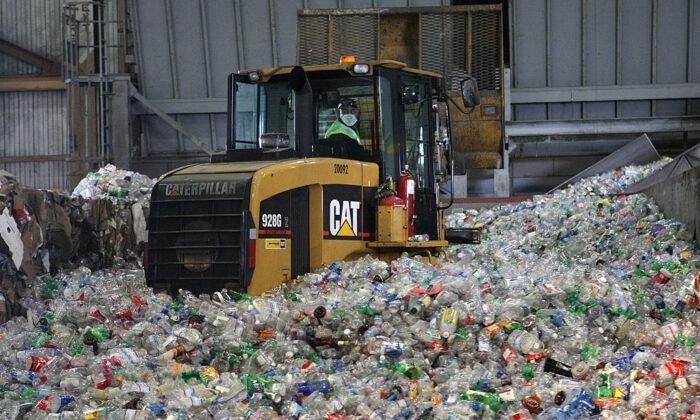The amount of plastics Australians generate in one year produces as much greenhouse gas as 5.7 million cars on the roads annually, which is more than one-third of emissions yielded annually by the country’s car fleet.
In a new study, the Australian Marine Conservation Society and WWF-Australia found that if Australia continues on its current path, the country’s plastic emissions will more than double to 42.5 million tonnes annually by 2050.
The study showed that Australia generates more single-use plastic waste per person than any other country except Singapore.
Recycling alone won’t solve the problem, though, as Australians need to cut plastic use and stop using virgin plastic, the researchers said.
Cutting plastic use by just 10 percent can reduce plastic emissions by up to 70 percent.
The report, ‘Carbon Emissions Assessment of Australian Plastics Consumption’, is the first large-scale study to calculate the emissions produced from the production and disposal of plastics, including recycling.
The study revealed that virgin plastics made from fossil fuels were “the most emissions-intensive” to produce, creating more than double the emissions of any other plastics.
AMCS Plastics Campaign Manager Shane Cucow said runaway plastic use is “creating mountains of waste and pollution, killing millions of animals every year through entanglement or ingestion.”
“The findings are shockingly clear,” Mr. Cucow said.
“Now we have clear evidence it is also fuelling global warming, which is endangering our entire marine ecosystem.
“We must use less plastic, stop using fossil fuels to make it and stop using fossil fuels as an energy source for plastic production and recycling. If we don’t, the emissions from plastic will only increase and exacerbate climate change.”
Recycling Can’t Get Us Out of This Mess
“Even if we recycle 100 percent of the plastic we use, we'll still see emissions double to more than 34 million tonnes annually by 2050,” she said.“The good news is that we can reduce plastic waste and cut down the emissions from plastic at the same time. Reducing plastic consumption, combined with better design, using it longer, and managing it more responsibly, is the only way to bring our plastic addiction under control and reduce the climate impacts of plastics at the same time.”
The study suggested that to reduce total emissions from its plastic use by up to 70 percent by 2050, the country needs to use plastics more efficiently and cut total consumption by at least 10 percent, increase plastic recovery and recycling to 100 percent and stop using virgin fossil-fuel-based plastic.
The report also found that incineration and burning plastics to produce energy are “the most emissions-intensive disposable methods” for plastics.
“Chemical recycling of plastics—where plastic waste is chemically treated to produce oil that can be used as fuel or remanufactured into plastic—is more emissions-intensive than mechanical recycling, producing 67 percent more emissions than mechanical recycling,” the study noted.
“Fossil-fuel based plastics produce nearly three times the emissions to manufacture than plant-based plastics (1,280kg CO2e/t -2.7 times over GWP 20-year basis).”




